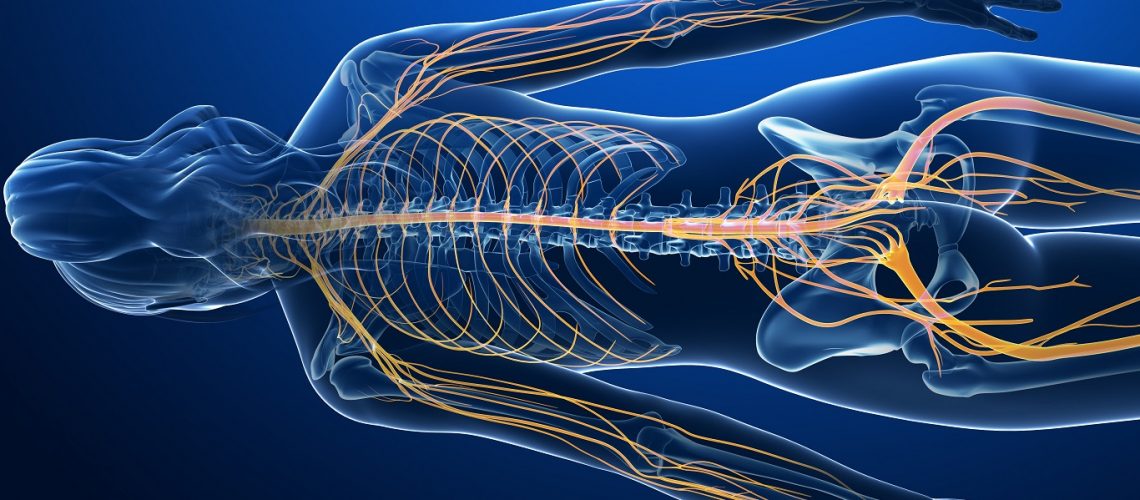We just acquainted you with LDN – Low Dose Naltrexone.
You have an idea of what it is and what is it generally “good” for.
Let us try to explain how it works so you can understand how it can help patients with fibromyalgia and other auto-immune conditions.
To understand how LDN works, we first have to understand how Naltrexone works.
Naltrexone is an opioid antagonist, meaning it blocks the opioid receptors in your brain. These receptors are meant to respond to endorphins – your body’s natural “feel good” chemicals. Prescription medications containing opioids or heroin attach to these same receptors and act like endorphins blocking the sensation of pain and having a calming, anti-depressive and a “feel good” effect. But they also lead to dependency/addiction. Naltrexone prevents opioids from attaching to these receptors.
The LDN – Low Dose Naltrexone– is thought to increase the levels of endorphins by only partially and briefly blocking the opioid receptors at a time when typically, endorphin levels are the highest. For most people, this is usually around 3-4 am . This partial blockage sends a message to the brain that the levels are low and allows the body to produce even more endorphins.
Several studies have determined that patients with auto-immune disorders have low levels of endorphins and it is theorized that endorphins play a role in immune system modulation, thus the role of LDN in auto-immune conditions.
Fibromyalgia is not considered an auto-immune disorder by most practitioners, but it is usually associated with other auto-immune disorders. It has a multi-factorial etiology (cause) and it is characterized by widespread musculoskeletal pain accompanied by fatigue, sleep, memory and mood issues. Fibromyalgia is considered to be the malfunction of neurotransmitters for pain receptors. It mimics the symptoms of many other autoimmune conditions and many old school doctors do not even recognize fibromyalgia as a real medical condition.
It often co-exists with other painful conditions, such as:
- Irritable bowel syndrome
- Migraine and other types of headaches
- Interstitial cystitis or painful bladder syndrome
- TMJ Temporomandibular joint disorders
How does LDN help patients with fibromyalgia?
Naltrexone, taken in gradually increasing strengths from 1.5mg up to 4.5mg (if necessary) at about 9:00 pm will reach its peak effectiveness around 3-4 a.m. when endorphins are at their highest levels. This will increase the production of endorphins and lead to pain relief.
There are several studies that have been conducted to test the effectiveness of LDN for the treatment of fibromyalgia.
The study conducted by Stanford University in 2009 found that LDN use led to the reduction of pain in patients with fibromyalgia by 33% compared to placebo, with rare side effects.
In 2013, the same university did a follow up study that showed the same beneficial and reported secondary benefits of less fatigue, better sleep and a general positive outlook.
In 2014 SUNY Upstate Medical University ran a retrospective study on LDN reporting improved pain tolerance for patients with fibromyalgia.
In 2016 Stanford University conducted again a study funded by National Institute of Health (NIH). The study focused on conditions with chronic pain that included fibromyalgia. Patients experienced significant pain relief and LDN helped with symptoms of associated conditions.
LDN is getting more and more attention and scientific recognition for its beneficial effects and very mild side-effect profile as it is helping so many patients with so many chronic conditions.
LDN is not yet approved by FDA for fibromyalgia and auto-immune diseases, so it is not commercially available. You still need a prescription from a doctor who knows about LDN and its benefits, then you need to find a reliable compounding pharmacy that can prepare that for you in the exact strength you need it. Please contact one of our experienced pharmacists to get help with your need for LDN.
References:
- Int J Pharm Compd.2018 May-Jun;22(3):252-256.The Use and Utility of Low-dose Naltrexone Capsules for Patients with Fibromyalgia. Cote B1,2, Ross B2, Fortner J3, Rao D4. https://www.ncbi.nlm.nih.gov/pubmed/29878893
- 3. Exp Biol Med (Maywood).2018 Dec 12:1535370218817746. doi: 10.1177/1535370218817746. [Epub ahead of print] Intermittent blockade of OGFr and treatment of autoimmune disorders.Zagon IS1, McLaughlin PJ1. https://www.ncbi.nlm.nih.gov/pubmed/30541348
- Pharmacotherapy.2018 Mar;38(3):382-389. doi: 10.1002/phar.2086. Epub 2018 Feb 23.The Safety and Efficacy of Low-Dose Naltrexone in the Management of Chronic Pain and Inflammation in Multiple Sclerosis, Fibromyalgia, Crohn’s Disease, and Other Chronic Pain Disorders. Patten DK1, Schultz BG1, Berlau DJ1. https://www.ncbi.nlm.nih.gov/pubmed/29377216
- In patients with fibromyalgia, is low-dose naltrexone effective in alleviating pain, and does it decrease use of oral opioids? Beard, Sheryl, MD; Hill, Lary, MD Evidence-Based Practice: June 2017 – Volume 20 – Issue 6 – p 11–12 doi: 0.1097/01.EBP.0000541737.59832.3d HELPDESK ANSWERS https://journals.lww.com/ebp/Abstract/2017/06000/In_patients_with_fibromyalgia,_is_low_dose.13.aspx
- Curr Rheumatol Rev.2018;14(2):177-180. doi: 10.2174/1573397113666170321120329.Low Dose Naltrexone in the Treatment of Fibromyalgia.Metyas S1, Chen CL1, Yeter K1, Solyman J2, Arkfeld DG1. https://www.ncbi.nlm.nih.gov/pubmed/28325149
- A novel glial cell inhibitor, low dose naltrexone, reduces pain and depression, and improves function in chronic pain: A CHOIR study K. Noon, J. Sturgeon, M. Kao, B. Darnal, S. Mackey Stanford University Department of Anesthesiology, Perioperative, and Pain Medicine, Stanford, CA
- A potential anti-inflammatory effect of low-dose naltrexone in fibromyalgia L. Parkitny, R. Moosavi, J. Younger Stanford University, Palo Alto, CA




